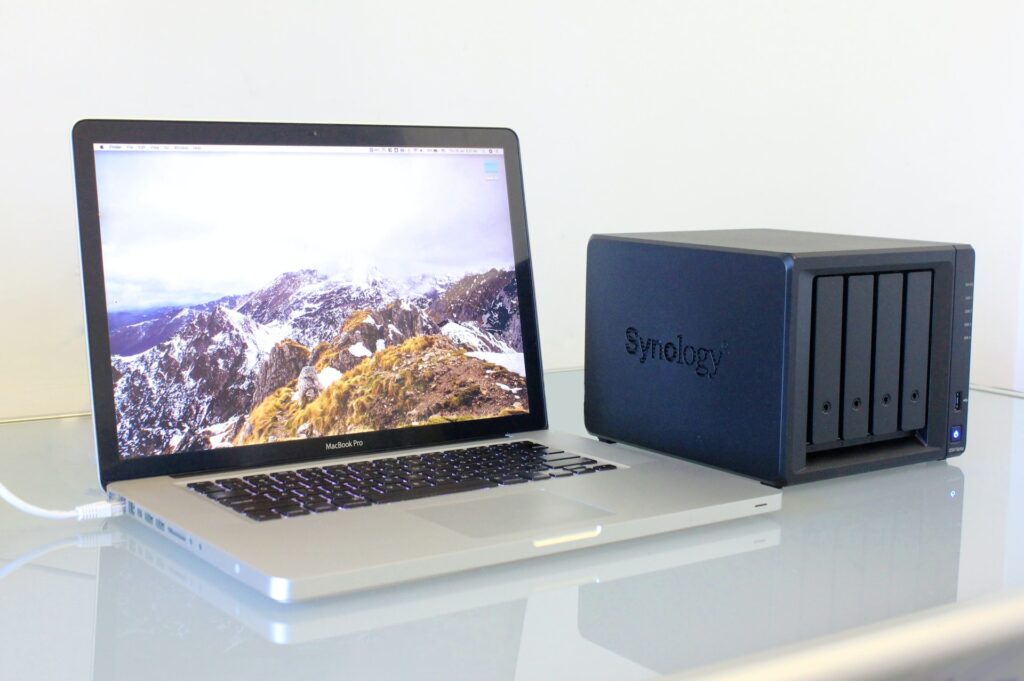
As we said way back in 2014, Synology makes a great series of NAS units — but the sheer size of the product line can get a little confusing. We frequently hear from creatives and power users that are interested in a Synology NAS but just aren’t quite sure how to make heads or tails of the desktop DiskStation lineup. So let’s tease apart the important information hiding in those product names.
For our victim, let’s take a popular current model:
DS920+
DS: It’s in the DiskStation series, i.e. it’s designed to sit on a desk. No rack or cabinet needed. (The other applicable option for creatives is RS for the rackmountable RackStation.)
9: Supports a total of 9 drive bays of storage. (“But wait,” you might be saying, “it’s only got 4 bays!” We’ll circle back to that shortly.)
20: Released in 2020.
+: It’s in the Plus series, meaning it’s been designed for high-performance, data-intensive tasks and is a good fit for small-to-medium businesses and creatives. (And yeah, the DiskStation +/j/slim/nothing categories are a bit opaque as a consumer — if you’re reading this blog, a Plus series model should be your baseline “normal” model. The nothing-on-the-end Value series will work for many emerging creatives, but the value comes from lower performance, and you will feel the difference if you’re using your NAS for live asset storage. When in doubt, go Plus for data, consider Value for backup.)
So… what about the 9 drive bays?
The thing that seems to throw people the most, Synology’s current naming system specifies the total number of drive bays of unit can support. The “missing” drive bays show up in the form of an eSATA expansion unit, which is generally the 5-bay DX517 Expansion Unit for current DiskStation models. So while a DS920+ comes with 4 bays and a DS1520+ comes with 5 bays, you can add additional bays using an expansion unit.
A DS420+ and a DS920+ both ship with 4 drive bays, and come in a visually identical chassis. At a glance, you’re not sure how they’re different. That difference? Room to grow. The DS920+ gets some beefier processing power and sports an eSATA port to connect an expander. The DS420+ is equipped only to handle its own 4 bays, and expanding down the road means adding another NAS or replacing your DS420+ with a bigger NAS.
(If you’re good at math, you might be wondering how the 5-bay DS1520+ gets to 15 bays. It has two eSATA ports to connect two DX517s.)
The Question of Expansion
With the naming out of the way, the next question many of our customers have is whether to go for the expandable option or the fixed-count option. A vast majority of creators start with a 4-bay unit and aren’t sure whether to plan ahead with a DS920+ or to save some money with a DS420+.
The good news? There’s not really a wrong answer. Even if you ultimately make the “wrong” choice for your needs, Synology units hold their value pretty well. The secondhand market will gladly finance a good chunk of your upgrade.
The best advice I can give here is to think about your general upgrade schedule. If you’re replacing (or adding to) your storage on an annual basis to deal with ballooning file sizes, an expandable NAS will give you the most flexibility, least hassle, and longest lifetime as file sizes continue to grow. Instead of having to configure (or migrate to) an entirely new NAS, you simply plug in the expander and keep going.
You’ll also want to think about the size of your team: the beefier hardware in the expandable models not only enables more drive bays, but also enables better performance in multiuser workflows. If you’re at a point where you foresee adding more employees or more collaborators, go with a DS920+.
Help, I’m still not sure!
Give us a call, shoot us an email, or schedule a consult. It’s what we’re here for, and we’re happy to help you built an IT plan that works for your business.
Heck, we’ll make it even easier: just fill out this easy contact form and we’ll reach out to you shortly!
0 Comments Leave a comment